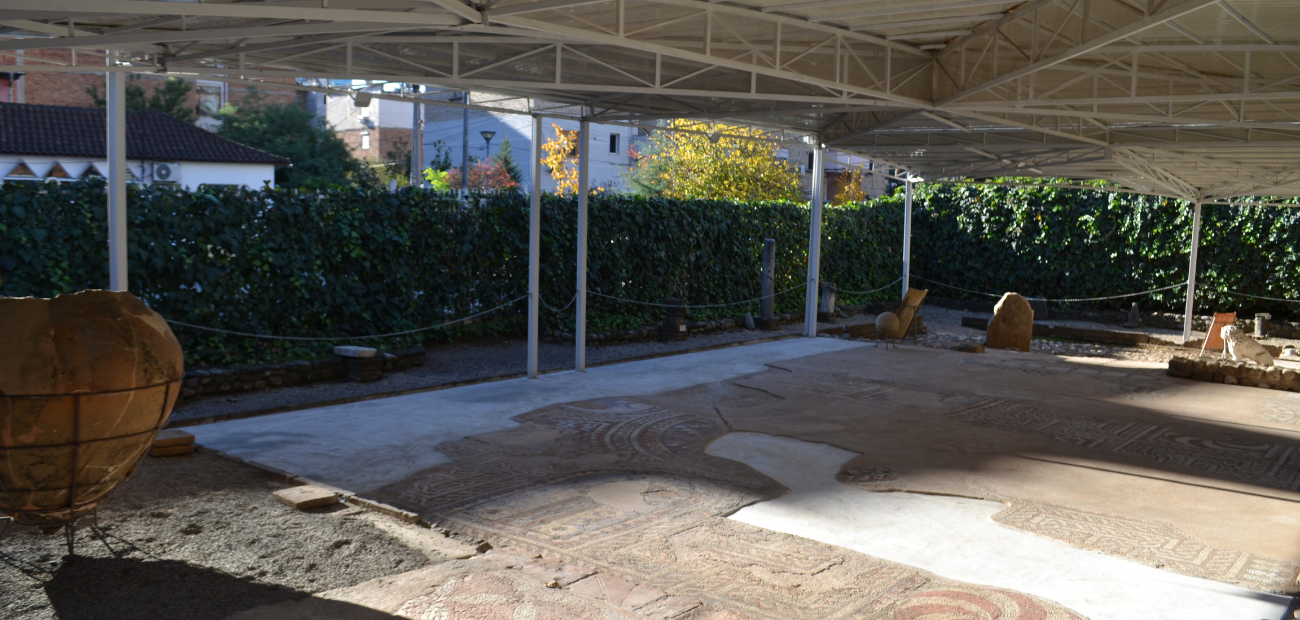The Tirana Mosaic

The Tirana Mosaic is thought to have been part of a rural house built in the first century AD.
In the third century AD the settlement is thought to have been replaced by a condominium complex, divided into two parts in the pars urban (residential part of the villa) and pars rustica (manufacturing part of the villa) which had also agricultural function.
Later in the fourth and fifth centuries, a Paleo-Christian Basilica was built on this site. The Paleo-Christian Basilica was built in the central hall of the rural house. Like in all churches of this period (second half of IV century AD), there were major renovations and reorganization of the building. The church's architecture is simple, but with signs of geometry and design used to enhance the entrance leading to the altar on a long, straight axis.
During the transformation of the building, a relic object was placed with bricks and cross symbols, dating back to the period of Emperor Constantine I (306-337). The auxiliary apartments on the north side of the building have been adapted from those of the premises.
Villa Rustica and the early Christian church known as Mosaic of Tirana are a significant example of the antiquity of this territory that was unintentionally discovered in 1972 during the construction of a brick building.

Mihal Ciko Street









